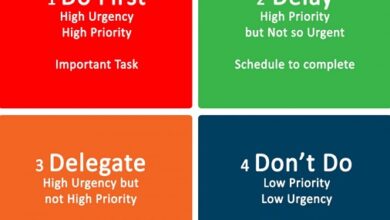What is External Recruitment its main sources and advantages and disadvantages
External recruitment
External recruitment is the process applied by HR to seek professionals in the market in order to fill an open position in the company and adopting best practices increases the success of hiring.
External recruitment consists of the search for professionals available in the market to fill an open position. Every company knows this process.
Although it is among the most well-known responsibilities of HR, this type of recruitment deserves attention so that it is seen in a more strategic way and leads to better hiring .
As we have already said, external recruitment is the process of attracting and selecting market professionals to make up the company’s staff .
It is called external because it focuses on an audience that is not yet part of the organization. This recruitment, therefore, leads HR to look for people available in the market or until they are employed in other companies.
This quest is common, but that doesn’t mean it’s easy. When HR directs its attention to an audience that is still unknown, it needs to be even more strategic and judicious in its processes.
The presentation must be clear and the advertisement of the vacancy must be well done. Furthermore, HR needs to look not only at technical skills and experiences, but also be able to carefully assess the set of soft skills and the profile of each candidate.
With all this, external recruitment is usually a long and sometimes expensive process, which requires good planning to be successful.
Main steps of External Recruitement
For you to better understand all this, let’s go through the main steps of this type of recruitment!
1-vacancy analysis
One of the first things HR needs to consider when thinking about how to recruit externally is the need for the company.
Before thinking about advertising a vacancy, it is necessary to be as clear as possible about what type of professional will be sought, considering their training, experiences and profile.
Therefore, together with the manager, HR must prepare a list of minimum requirements to be met and outline the ideal profile . Let it be clear: it is important to consider hard skills and soft skills in this process.
Once it’s clear who the company is looking for, it’s time to use the information to create the vacancy introductory text.
The description needs to be clear to prevent out-of-profile professionals from applying and end up prolonging the external recruitment process.
This description will also help HR itself analyze the profiles later in the process.
2-Publication of the vacancy
Once the first stage has been completed, HR can start publicizing the vacancy in order to attract candidates.
To do so, it is necessary to know the most common dissemination channels, which range from job search platforms to unions .
It is always essential to ensure that interested people know where to send their resumes and portfolios so that they can apply.
In addition, the company can also assess whether the HR hunting strategy applies. The practice is to actively approach professionals of interest, even if they are employed in other organizations.
It is worth mentioning that, in such cases, the disclosure of the vacancy has a differentiated approach. The contact usually starts with an invitation to a conversation about the opportunity.
If there is a positive response, as a sign of interest, details are shared and the rest of the selection process is conducted.
3-Conducting the interviews
An external recruiting process does not need to have a single interview. In contrast, it is possible to conduct an initial interview and make new contacts as the candidate progresses through the process.
This interview or initial contact can be done by phone or video call, for example, with the aim of collecting basic information and confirming the data presented in the resume .
Further on, further interviews, whether individual or in groups, can be scheduled. Remember that you don’t have to choose between one or the other.
Depending on the type of vacancy, a conversation between recruiters and candidates done individually may be enough.
In other cases, group dynamics may be necessary for a more accurate behavior analysis.
Finally, an interview with the vacancy manager is also welcome to increase the chances of a good alignment between the professional and his future team.
The vacancy manager is the leader of the team interested in a new hire. Therefore, it is only fair that your opinion is heard before hiring.
4-Hiring
External recruitment comes to an end with the hiring of the professional who best met the demands, that is, who came closest to the ideal profile outlined.
We are talking about a somewhat bureaucratic stage that has to do, above all, with the organization of all the paperwork such as the contract, the signing of the Work Card and the communication to Caged .
Although this is not our focus here, it is worth mentioning that, once this process is complete, HR turns its attention to the onboarding of new hires.
Difference between external and internal recruitment
Knowing what external recruiting is implies understanding the differences for internal recruiting. It’s simple.
While the first consists of the search for professionals in the market, the second concerns a search among those who are already employees of the company .
The idea of internal recruitment is to understand who can change their position and even their area of activity in the organization if they receive the proper training for a new role.
This process has to do with identifying potential and has its advantages for the company. In addition to being cheaper, internal recruitment bets on professionals with a good cultural fit and who already know the local dynamics well.
It turns out that the company is not always able to bet on internal recruitment or only in this modality. This is where external recruiting comes into play.
The main sources of external recruitment
It may seem needless to say, but an HR person needs to keep in mind that one of the steps to successful external recruitment is knowing where to advertise vacancies and look for professionals.
There are several channels to make this communication and establish the first contact. We will comment on the main ones below.
1-job search platforms
You must already know that there are websites specializing in the dissemination of job vacancies, right?
As an example, we mention here Catho , Vagas and InfoJobs, platforms that are widely used by professionals who want to find a job .
In short, this means that by using one or more of these sites, you ensure that you are advertising the vacancy in an environment full of people interested in new opportunities.
2-Advertisements in newspapers and magazines
There are those who think that, with the existence of job search platforms, print ads are completely left behind. Not quite.
Depending on the profile of the vacancy, traditional means can still be quite useful to find the profile you are looking for as a professional.
3-Social networks suitable for external recruitment
Currently, the most suitable social network to advertise vacancies and actively search for professionals, HR hunting , is LinkedIn .
That’s because LinkedIn is a professional network and the people who are there know that the main subject is the world of work.
Those who create a profile can even signal to recruiters that they are available for a new opportunity.
In addition, it is an appropriate channel to approach professionals who are already employed, but whose profile is of interest to the organization.
However, this does not mean that you cannot advertise vacancies on other networks. The company page itself can be a channel, as well as recruited profiles.
When mixing a personal profile with professional issues, however, it’s always a good idea to consider appropriateness before acting.
4-Educational institutions and unions
Several higher education institutions partner with companies to advertise vacancies and help find new professionals.
This works especially well when the focus of external recruiting is finding people for a trainee program .
Unions are another channel for the dissemination of vacancies well targeted at professionals working in a specific sector.
5-Referral from other professionals
The famous “IQ” or “who referred” is a practice that you must already know well, right?
Although there is some mistrust in this indication story, the idea can work well if HR has the criteria to evaluate profiles in an impartial way .
Finding employees who fit an ideal profile can be challenging. So it doesn’t hurt to ask other recruiters and well-connected professionals if they know someone who might be a good fit for the position.
In general, a referral is based on confidence in the technical skills and behavior of the other.
This is because, although each one is responsible for himself, those who nominate feel that nominating someone is a responsibility that impacts everyone involved. So, this exchange can be very fruitful.
6-talent bank
Another interesting source for external recruitment is the company’s talent bank, that is, the CVs that were stored for talent acquisition opportunities”>future talent acquisition opportunities .
In a selection process, an organization is faced with people who have a good resume, an adequate profile, but who, for some reason, do not fit the open position.
These people, who have already been rated as interesting additions to the company, should be re-examined for the opportunity that has arisen.
7-Headhunters and external recruiting
Finally, we need to mention headhunters . In case you didn’t already know, we are talking about a professional who is an expert in the search for talent .
Backed by his networking and skills, he has the resources for a more successful search to find the ideal candidate for a position.
Hiring a headhunter does not mean taking HR out of the picture, but relying on specialized support to optimize the process and increase the chances of a successful hire .
The advantages and disadvantages of external recruitment
Whenever a strategy is studied to be adopted or optimized by a company, it is convenient to weigh the pros and cons.
For that, you need to know the advantages and disadvantages of external recruitment. Follow up!
1-External recruitment and its advantages
At this point in your reading, it is likely that you have already managed to think of some of the advantages of this type of recruitment.
So, just to help you go further, we’ve listed the main ones. Check out!
1-Access to a greater number of candidates and greater power of choice
If the company opts for internal recruitment, it obtains advantages, but it deals with a limited number of professionals capable of taking on a new position.
On the other hand, if you continue with external recruitment, you can evaluate hundreds of resumes and increase your power of choice.
A broader selection process allows for a more comprehensive analysis . Having the ideal profile well defined, HR is able to use the largest number of candidates in its favor to select the most suitable professional possible.
2-Encouraging contact with the market and increasing competitive advantage
It is important to make it clear that internal recruitment can be excellent to have professionals with a well-aligned cultural fit.
However, if the company only carries out internal processes, it ends up reducing its contact with the market.
Opening an external recruitment process gives the organization the possibility to keep up to date on its market, on the profile of professionals and even on requirements and salaries that are being practiced.
This openness also helps the company to be seen more among professionals and arouse the interest of potential talents.
Also, when opting for external recruitment, the organization has chances of increasing its cultural diversity , something that favors productivity, innovation and profitability.
As a result, the process contributes to increasing the company’s competitive advantage as it now has a more plural and stronger framework.
3-Receiving new and extra-motivated people
Someone given the opportunity to change roles within the company can also be highly motivated.
The same goes for new professionals who come to the organization through an external recruitment process.
The point here is the power new people have to help bring about more meaningful change .
If the company is looking for a renewal of ideas or even of its organizational culture, for example, it may be easier to achieve this with someone from outside.
4-Creating or sourcing the talent pool
When talking about the sources of external recruitment, we mentioned the talent pool. With this, it is likely that you have already understood its relevance to an organization.
The talent bank is a tool that gathers candidate data, such as information about academic background, previous experiences, projects, etc.
Its purpose is to store this information so that HR has easy access when a new vacancy is opened in a recruitment and selection process. Something that helps to save time and even reduce costs .
2-External recruitment and its disadvantages
As it should be, there are disadvantages or points of caution about external recruitment that need to be noted. Let’s go to them.
1-higher cost
We’ve mentioned this before. Compared to internal recruiting, the external process tends to cost the company more.
The reasons are due to the fact that this type of recruitment requires the placement of ads and is longer.
Something that results in more HR time and resources invested in the task of finding and selecting the ideal candidates .
2-Risk of negative impact on the organizational climate
If the process of new hires is not well worked out internally, company employees may receive the arrival of new professionals in a negative way.
That’s because it’s natural for professionals to want to climb the organization’s hierarchy.
If, instead of giving a chance for the growth of its employees, the company prefers to hire, a malaise can be generated , harming the organizational climate.
To clarify, it is possible to do both: enabling the professional growth of employees and investing in internal recruitment when necessary.
However, it is necessary to pay attention to the company’s internal scenario and the possibilities that exist there or should be better worked on to prevent new hires from being poorly received.
3-Greater margin of error
A problem that draws attention in hiring that do not work out is not the lack of qualification, but the lack of identification.
HR is recommended to bet on tools such as the behavioral profile in the selection process . The idea is to increase the chances of alignment between mission, vision and values of each professional and the company.
If the alignment does not happen properly and becomes an obstacle, it can increase turnover , voluntary or involuntary, causing more expenses and headaches for the organization.
Do you realize, however, how each of the disadvantages that we point out here is circumventable?
To successfully adopt external recruitment, your HR needs to organize itself well to make the process efficient and work on people management.




